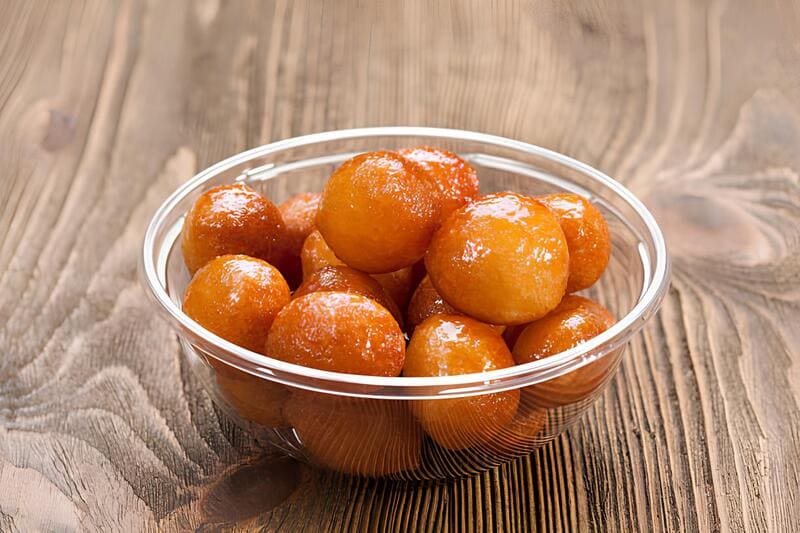
A cherished gem in Egyptian cuisine, Lokma, also known as Zalabia or Loukoumades, holds a special place in the hearts of many. These golden, sweet dumplings with a crispy exterior and soft interior are a beloved treat, often enjoyed during celebrations and gatherings. This traditional dessert embodies a unique blend of history and flavor, symbolizing prosperity and joy in many Middle Eastern households.
With its delightful light and fluffy texture, Lokma delivers a burst of sweetness in every bite, thanks to its syrupy coating. The perfect balance of crunch and tenderness makes it irresistible. Whether you’re familiar with this dessert or trying it for the first time, the effortless preparation method will make it a staple in your menu. Let’s dive into the art of making these authentic Egyptian dumplings.
Ingredients
- 2 cups all-purpose flour
- 2 tablespoons powdered milk
- 2 tablespoons starch
- 1 tablespoon sugar
- 1 teaspoon instant yeast
- 1/4 teaspoon baking powder
- 1 pinch salt
- Warm water (1-2 cups, as needed)
- 2 tablespoons white honey (optional)
- Oil, for frying
- Syrup: 3 cups sugar, 1 1/2 cups water, a squeeze of lemon juice
Preparation
- In a large mixing bowl, combine the flour, powdered milk, starch, sugar, yeast, baking powder, and salt. Mix well.
- Gradually add warm water while stirring, until a runny, smooth dough forms.
- Optionally, add two tablespoons of white honey to the dough for extra flavor.
- Cover the bowl and let the dough ferment for 1.5 to 2 hours, until it doubles in size.
- Prepare the syrup by dissolving sugar in water and bringing it to a boil. Add a squeeze of lemon juice and let it cool.
- Heat oil in a deep frying pan over medium heat until hot.
- Using a spoon or a piping bag, drop small rounds of dough into the hot oil. Fry until golden brown and crispy.
- Remove the dumplings from the oil and drain on paper towels.
- While still warm, dip the dumplings in the prepared syrup, ensuring they are well-coated.
- Serve immediately with powdered sugar, Nutella, or even a drizzle of lotus sauce for added sweetness.
Did you know?
The origins of Lokma date back centuries, making it a dessert rich in history and heritage. Originally, Lokma was called “loukoumades” in ancient Greece, and was served to winners of the Olympic games as a symbol of victory and joy. This dessert has transcended borders and cultures, appearing in various forms across the Middle East, Turkey, and the Mediterranean.
In Egypt, these sweet treats are particularly popular during the month of Ramadan, where they’re enjoyed as part of the Iftar meal to break the fast. The name “lokmat al-qadhi” translates to “judge’s morsel,” emphasizing how every bite delivers a small but impactful taste of satisfaction.
Crisp on the outside yet melt-in-your-mouth soft on the inside, Lokma showcases the beauty of simplicity in cooking. The dough’s elasticity is key to achieving the perfect texture, and the use of warm water aids in this fermentation process.
Additionally, frying twice, as some prefer, enhances their crispiness, making them a versatile recipe piece to experiment with to suit your texture preference. Whether you enjoy them plain or with a drizzle of your favorite sweet topping, Lokma surely brings delight to any occasion.
